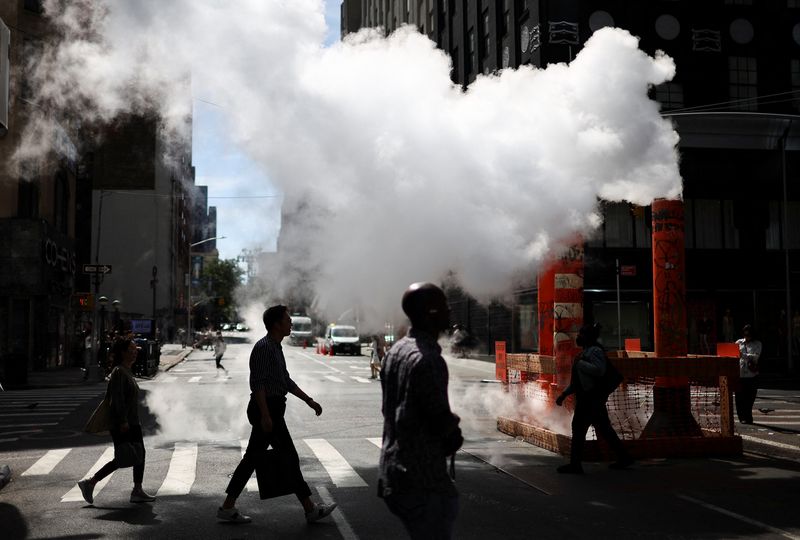By Allende Miglietta
(Reuters) – A brand new report from the Joint Heart for Political and Financial Research has discovered that the U.S. public workforce system could also be perpetuating racial inequities in employment for Black People.
The workforce system “exacerbates these disparities by steering Black workers into low-wage opportunities with minimal career advancement and economic mobility,” the report discovered.
Its evaluation highlighted a attainable resolution in “sector partnerships” – collaborations between employers in the identical trade, with academic establishments, community-based organizations, and unions – to develop staff’ abilities and join them with potential employers.
“ () model has shown it can increase pay and job retention for Black workers,” mentioned Justin Nalley, senior coverage analyst on the Joint Heart.
The Workforce Innovation and Alternative Act, signed into regulation July 2014, requires native and state workforce boards to gather and analyze regional labor market knowledge to develop “sector initiatives for in-demand industry sectors or occupations.”
Nonetheless, the Joint Heart mentioned there is no such thing as a federal knowledge that particulars the outcomes for Black People in work applications as a result of gathering and reporting racial demographics shouldn’t be a requirement on the state degree. Black People comprise 13% of the workforce, in response to the Bureau of Labor Statistics.
The Division of Labor didn’t instantly reply to a request for remark.
Sector partnerships usually are not funded throughout the WIOA. Whereas workforce boards will need to have partnerships within the strategic growth plan, “there’s no funding attached to it,” Nalley mentioned, including that discriminatory hiring practices additionally hinder progress.
Federal and state companies that oversee anti-discrimination insurance policies, just like the U.S. Equal Employment Alternative Fee, are underfunded, in response to Algernon Austin, director of the Heart for Financial and Coverage Analysis.
“Our ability to identify and counteract discrimination in the labor market has been systematically weakened over time,” Austin mentioned, including underfunded enforcement leaves accountability gaps for inequitable outcomes.
The EEOC mentioned in a press release that whereas it has “implemented efficiencies,” it has recovered “significantly more in monetary benefits for victims of discrimination each year than our budget—$665 million in FY 2023 alone.”
The U.S. Home of Representatives handed laws to reform the WIOA in April. The bipartisan invoice, A Stronger Workforce for America Act, goals to develop staff’ abilities growth.
The Joint Heart mentioned WIOA-eligible coaching applications put together Black staff for low-level jobs the place contributors would make a median of lower than $40,000 yearly.
A U.S. Division of Labor 2021 examine on the wage-growth trajectory of American staff in coaching applications, together with sector partnerships, confirmed Black staff incomes $2.46 to $15.50 much less per hour than white colleagues after coming into the transportation, manufacturing, healthcare and agriculture fields. By 10 years within the workforce, white staff’ wages develop roughly 28% greater than Black counterparts.

The Joint Heart is pushing for extra “race accountability data metrics” to be included within the Senate model of the invoice, which has but to be handed.
“The availability of getting the skills you need to make higher salaries, a lot of those opportunities have been restricted just by discrimination,” mentioned Democratic Consultant Bobby Scott, who launched the invoice with Republican Rep. Virginia Foxx.




